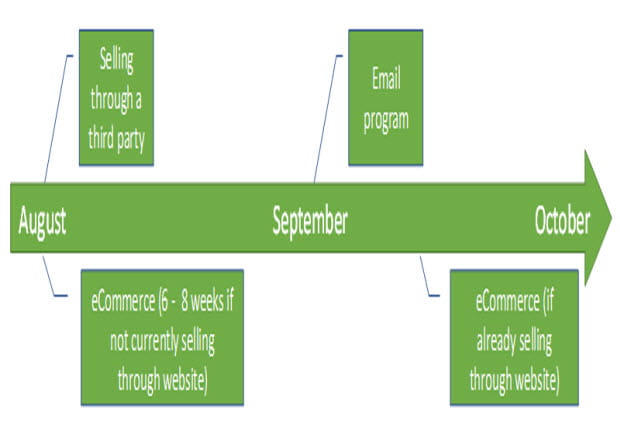Payments Leader
Growing Loyalty Through Co-branded and Affinity Credit Cards
July 13, 2017
Kris Carrera I Business Line Executive, Credit
More than half of gift cards are sold in the fourth quarter, according to our statistics at FIS. But most merchants don’t start planning their holiday gift card programs until after the back-to-school rush. If you truly want to optimize your gift card program, the time to act is now.
What’s the Rush with Gift Card Programs?
Regardless of whether a merchant has an existing gift card program or not, many decisions need to be made by multiple parties in order to ensure that a program syncs with the overall strategy in order to realize the maximum payback. And, whether executing a more sophisticated program or creating a new program from scratch, the process takes time.

How could your company’s gift card program become more effective?
To launch a gift card program, a merchant first must decide how robust to make the program. For example, will cards only be sold at the retailer’s physical facility or will distribution expand to e-commerce or third-party providers such as grocery, drug and convenience stores?
Next, the merchant must find a responsive provider that can meet the program’s goals. For example, one goal might be to run an email campaign with incentive gift cards to drive foot traffic. Better providers will offer email marketing programs and marketing materials such as store signage and window clings.
Once the provider is chosen, software must be integrated into the merchant’s current POS system or loaded onto a separate terminal, cards must be ordered and produced, the merchandising plan for gift cards must be defined and employees must be trained to execute the program.
Selling through a Third Party: This requires the longest lead time. The two providers that handle third-party distribution – i.e., gift cards sold on j-hooks in grocery, drug and convenience stores – have summer cut off dates for new programs. Agreements must be worked out and cards must be produced. Third-party distributors are already loading up their warehouses with holiday gift cards.
Email Program: A quality email program requires a lead time of around four weeks. Decisions that have to be made include: 1) outlining the rationale for the program – e.g., driving foot traffic from the trading area; 2) determining the target customer profile; and 3) deciding how many campaign waves will run, considering the email clutter during the holidays that diminishes the strength of everybody’s programs.
E-commerce Program: The timing depends on whether the merchant currently sells through e-commerce. If the website is already set up for e-commerce then adding what amounts to an additional SKU requires only minor programming. However, if the merchant does not currently offer e-commerce on the website, lead times are six-to-eight weeks for virtual or plastic cards.
According to CardCash, physical gift cards are growing at the rate of 10 percent annually, but digital card growth jumped 200 percent last season. With more consumers routinely doing their holiday shopping online, merchants need to seriously consider an e-commerce program, not only to boost revenue but also to defend share from the competition.